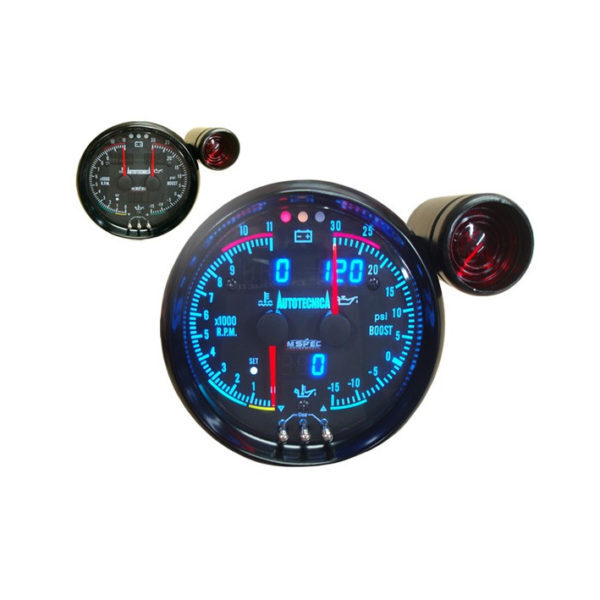Discover Exactly How a Tachometer Can Improve Your Vehicle's Efficiency
Discover Exactly How a Tachometer Can Improve Your Vehicle's Efficiency
Blog Article
The Relevance of a Tachometer in Keeping Track Of Engine Rate and Performance in Automotive Applications
In the world of auto design, the tachometer stands as a pivotal instrument in the chauffeur's toolbox, supplying a straight home window right into the internal operations of a lorry's engine. Past its function as a simple scale of transformations per min (RPM), the tachometer offers as a vital device for fanatics and specialists alike, supplying real-time understandings into engine efficiency and wellness.
Importance of Keeping Track Of Engine RPM
Keeping track of engine RPM, or revolutions per minute, is a critical facet of vehicle upkeep and efficiency assessment. Engine RPM directly correlates with the speed at which the engine's crankshaft revolves, indicating exactly how promptly the engine is running.
Additionally, keeping an eye on engine RPM is important for efficiency analysis in auto racing and high-performance cars. In recap, keeping track of engine RPM is not just essential for spotting problems however likewise for optimizing engine efficiency in different automotive applications.

Benefits of Real-Time Data
In automobile applications, real-time information plays a critical duty in providing instant understandings into the efficiency and condition of the lorry. By continually checking different criteria such as engine rate, temperature level, gas usage, and more, real-time information provides countless benefits that add to improved efficiency and security when traveling.
Furthermore, real-time information facilitates efficiency optimization by offering prompt feedback on driving habits and engine effectiveness. Chauffeurs can adjust their actions in real-time based on this details to accomplish much better fuel economic climate and prolong the life-span of their automobile.

Moreover, real-time data plays an important function in contemporary vehicle diagnostics, making it possible for specialists to promptly diagnose and attend to breakdowns. This leads to lowered downtime, lower upkeep costs, and inevitably, improved general vehicle integrity and longevity (tachometer). By taking advantage of the power of real-time information, automobile stakeholders can make enlightened decisions that favorably influence both the performance and durability of the car
Impact on Equipment Shifts
The tachometer plays a vital duty in enhancing gear shifts by providing real-time engine rate information to the vehicle driver. When coming close to the redline on the tachometer, it signifies the motorist to upshift to prevent over-revving the engine and triggering possible damages.
Additionally, Get More Information the tachometer help in attaining smoother equipment changes, specifically in hands-on transmissions. By keeping an eye on engine speed, chauffeurs can execute equipment changes at the ideal RPM range, reducing snagging movements and reducing wear on the transmission parts. This accuracy in gear changes not just improves driving comfort yet likewise contributes to next sustain performance.
Enhancing Fuel Efficiency
Offered the vital role the tachometer plays in maximizing equipment shifts for efficiency and engine health, it straight contributes to optimizing fuel performance in automobile applications. By providing real-time responses on engine speed, the tachometer aids chauffeurs in maintaining one of the most efficient RPM variety for fuel economic climate. When drivers continually keep track of the tachometer and readjust their driving behaviors accordingly, they can stay clear of unnecessary gas intake triggered by over-revving or hauling the engine.
Furthermore, the tachometer aids chauffeurs recognize the most fuel-efficient gear to be in at any kind of given moment, protecting against the engine from working more challenging than necessary. This is especially critical during acceleration and travelling, where remaining in the best equipment can considerably influence gas efficiency. Furthermore, the tachometer can signal drivers to prospective mechanical problems that can be negatively affecting fuel economic climate, such as a sliding clutch or a clogged air filter. Finally, the tachometer serves as a useful device in boosting fuel efficiency by promoting ideal driving routines and recognizing locations for improvement in the vehicle's performance.

Making The Most Of Engine Durability
The tachometer's role in checking engine speed and efficiency is important in making certain the durability of auto engines. Keeping an eye on the tachometer allows motorists to remain within the recommended RPM array for their vehicle, protecting against unnecessary stress on the engine and expanding its life expectancy.

Conclusion
Finally, the tachometer plays an important role in keeping i was reading this an eye on engine speed and efficiency in automotive applications. By giving real-time information on RPM, it permits efficient gear changes, enhanced gas efficiency, and made best use of engine durability. This device is vital for keeping optimal engine performance and guaranteeing the general performance of a vehicle.
Report this page